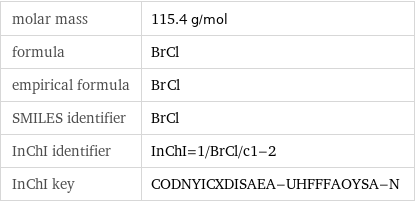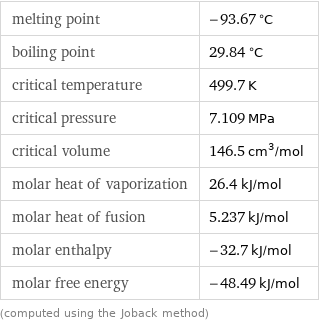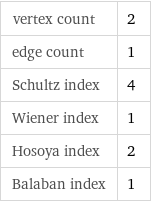Input interpretation

bromo hydrochloride
Basic properties

molar mass | 115.4 g/mol formula | BrCl empirical formula | Br_Cl_ SMILES identifier | BrCl InChI identifier | InChI=1/BrCl/c1-2 InChI key | CODNYICXDISAEA-UHFFFAOYSA-N
Lewis structure

Draw the Lewis structure of bromo hydrochloride. Start by drawing the overall structure of the molecule: Count the total valence electrons of the bromine (n_Br, val = 7) and chlorine (n_Cl, val = 7) atoms: n_Br, val + n_Cl, val = 14 Calculate the number of electrons needed to completely fill the valence shells for bromine (n_Br, full = 8) and chlorine (n_Cl, full = 8): n_Br, full + n_Cl, full = 16 Subtracting these two numbers shows that 16 - 14 = 2 bonding electrons are needed. Each bond has two electrons, so the above diagram has all the necessary bonds. There is 1 bond and hence 2 bonding electrons in the diagram. Lastly, fill in the remaining unbonded electrons on each atom. In total, there remain 14 - 2 = 12 electrons left to draw: Answer: | |
Estimated thermodynamic properties

melting point | -93.67 °C boiling point | 29.84 °C critical temperature | 499.7 K critical pressure | 7.109 MPa critical volume | 146.5 cm^3/mol molar heat of vaporization | 26.4 kJ/mol molar heat of fusion | 5.237 kJ/mol molar enthalpy | -32.7 kJ/mol molar free energy | -48.49 kJ/mol (computed using the Joback method)
Units

Quantitative molecular descriptors

longest chain length | 2 atoms longest straight chain length | 2 atoms longest aliphatic chain length | 0 atoms aromatic atom count | 0 atoms H-bond acceptor count | 0 atoms H-bond donor count | 0 atoms
Elemental composition

Find the elemental composition for bromo hydrochloride in terms of the atom and mass percents: atom percent = N_i/N_atoms × 100% mass percent = (N_im_i)/m × 100% Plan: • Write the chemical formula and gather atomic masses from the periodic table. • Determine values for N_i, m_i, N_atoms and m using these items. • Finally, compute the percents and check the results. Write the chemical formula: BrCl Use the chemical formula, BrCl, to count the number of atoms, N_i, for each element and find the total number of atoms, N_atoms: | number of atoms Br (bromine) | 1 Cl (chlorine) | 1 N_atoms = 1 + 1 = 2 Divide each N_i by N_atoms to calculate atom fractions. Then use the property that atom fractions must sum to one to check the work: | number of atoms | atom fraction Br (bromine) | 1 | 1/2 Cl (chlorine) | 1 | 1/2 Check: 1/2 + 1/2 = 1 Compute atom percents using the atom fractions: | number of atoms | atom percent Br (bromine) | 1 | 1/2 × 100% = 50.0% Cl (chlorine) | 1 | 1/2 × 100% = 50.0% Look up the atomic mass, m_i, in unified atomic mass units, u, for each element in the periodic table: | number of atoms | atom percent | atomic mass/u Br (bromine) | 1 | 50.0% | 79.904 Cl (chlorine) | 1 | 50.0% | 35.45 Multiply N_i by m_i to compute the mass for each element. Then sum those values to compute the molecular mass, m: | number of atoms | atom percent | atomic mass/u | mass/u Br (bromine) | 1 | 50.0% | 79.904 | 1 × 79.904 = 79.904 Cl (chlorine) | 1 | 50.0% | 35.45 | 1 × 35.45 = 35.45 m = 79.904 u + 35.45 u = 115.354 u Divide the mass for each element by m to calculate mass fractions. Then use the property that mass fractions must sum to one to check the work: | number of atoms | atom percent | mass fraction Br (bromine) | 1 | 50.0% | 79.904/115.354 Cl (chlorine) | 1 | 50.0% | 35.45/115.354 Check: 79.904/115.354 + 35.45/115.354 = 1 Compute mass percents using the mass fractions: Answer: | | | number of atoms | atom percent | mass percent Br (bromine) | 1 | 50.0% | 79.904/115.354 × 100% = 69.27% Cl (chlorine) | 1 | 50.0% | 35.45/115.354 × 100% = 30.73%
Elemental oxidation states

The first step in finding the oxidation states (or oxidation numbers) in bromo hydrochloride is to draw the structure diagram. Next set every oxidation number equal to the atom's formal charge: There is 1 bromine-chlorine bond in bromo hydrochloride. For this bond, assign the bonding electrons to the most electronegative element. First examine the bromine-chlorine bond: element | electronegativity (Pauling scale) | Br | 2.96 | Cl | 3.16 | | | Since chlorine is more electronegative than bromine, the electrons in this bond will go to chlorine. Decrease the oxidation number for chlorine (by 1 for single bonds, 2 for double bonds, and 3 for triple bonds), and increase the oxidation number for bromine accordingly: Now summarize the results: Answer: | | oxidation state | element | count -1 | Cl (chlorine) | 1 +1 | Br (bromine) | 1
Orbital hybridization

First draw the structure diagram for bromo hydrochloride, and for every non-hydrogen atom, count the σ-bonds. Note that double and triple bonds consist of one σ-bond together with one or two π-bonds: Identify those atoms with lone pairs: Find the steric number by adding the lone pair count to the number of σ-bonds: Consult the following chart to determine the hybridization from the steric number: steric number | hybridization 2 | sp 3 | sp^2 4 | sp^3 5 | dsp^3 6 | d^2sp^3 7 | d^3sp^3 Now assign the hybridization for each atom: Answer: | |
Topological indices

vertex count | 2 edge count | 1 Schultz index | 4 Wiener index | 1 Hosoya index | 2 Balaban index | 1